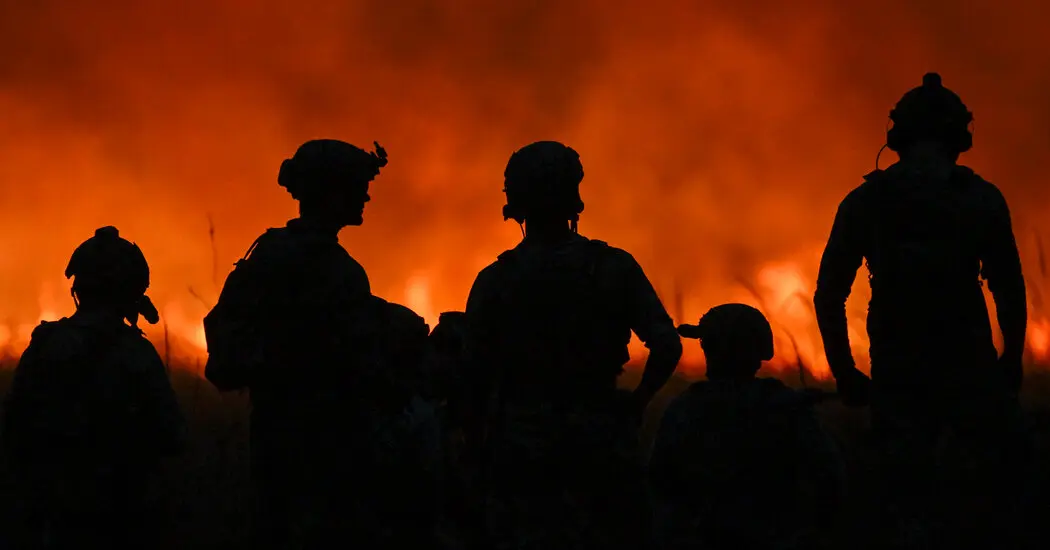- cross-posted to:
- nyt_gift_articles
- cross-posted to:
- nyt_gift_articles
I think it’s interesting to note that in WW1 PTSD like symptoms were called shell-shock, and were believed to be a consequence of exposing the human body to artillery fire. Compare that to this quote from the article:
he was grappling with sleeplessness, depression and severe memory problems.
“A lot of us are like that,” he said. “It’s not psychological — there is something physiologically wrong. And a lot of guys struggle.”
deleted by creator
The paragraph before the one you quoted says it:
Explosives ordinance disposal team members, who disable roadside bombs and routinely train and work around very large blasts, had the highest suicide rate — 34.77 deaths per 100,000 people per year — followed by infantry and special operations forces; armor crews; and artillery troops; whose rates are closer to 30 deaths per 100,000.
That’s a 15% bump in suicide for the most blast exposed troops when compared to less blast exposed combat troops.
Obviously combat exposure vs not is going to have a large effect, but blast exposure seems to have a further effect on top the horrors of combat.
Also:
In the Air Force, where blast exposure is rare, there were no significant differences in suicide rates among different military occupations. But among Army and Marine Corps troops, the rates are elevated wherever blasts are part of daily work
The report presented the data, but made no attempt to grapple with the implications:
The report released on Wednesday does not mention blast exposure as a factor, and offers no insights into what may be contributing to the different suicide rates. Still, the correlation between deaths by suicide and levels of blast exposure is a common theme in the figures
deleted by creator
It’s the same reason that an increase from a 0.0001% chance of something happening to a 0.0002% chance is a 100% increased chance of the thing happening.
More relevantly, 0.0003477% is ~ 15% bigger a number than 0.0003000%. The overall numbers are still low, but the increase is significant.
deleted by creator
Yep, NP!
Stats can be very unintuitive. You’re not alone.
I remember reading over some logic - statistics “puzzles”, where the logic is sound if you follow step by step on paper, but for some reason your mind just has trouble grasping the concept which leads to confusion.
The New York Times, that’s why. It’s a paper which drastically lost credibility.
Paywalled, but I wonder if it has to do with tinnitus? I imagine that is just maddening. This isn’t anywhere as extreme, but Leonard Nimoy got tinnitus while working on an episode of Star Trek after a squib blew up too close to him and it helped drive him to serious alcoholism which almost totally destroyed his career.
It’s a gift link, so you shouldn’t hit the paywall if you’ve got javascript enabled and aren’t running a browser extension which strips off the gift token.
TL;DR; It’s due to brain damage.
Thanks. Not only is it not tinnitus but, according to the searching I’ve been doing:
[The] suicide rate was lower among veterans with tinnitus than veterans without tinnitus
https://www.ncbi.nlm.nih.gov/pmc/articles/PMC6580142/
That honestly surprises me.
I wonder if the lower suicide rate is due to the fact that the individuals with tinnitus actually seek medical attention for it and, as a side effect, get treated for additional health problems as well.
I was thinking the same thing.
Back in music school, a teacher with tinnitus made us read the suicide note from a guy with severe tinnitus. That really put us straight with regards to wearing ear protection around loud instruments.
Brain damage turns to brain dead.
New York Times Media Bias Fact Check Credibility: [High] (Click to view Full Report)
Name: New York Times Bias: Left-Center
Factual Reporting: High
Country: United States of America
Full Report: https://mediabiasfactcheck.com/new-york-times/Check the bias and credibility of this article on Ground.News
Thanks to Media Bias Fact Check for their access to the API.
Please consider supporting them by donating.Footer
Beep boop. This action was performed automatically. If you dont like me then please block me.💔
If you have any questions or comments about me, you can make a post to LW Support lemmy community.






